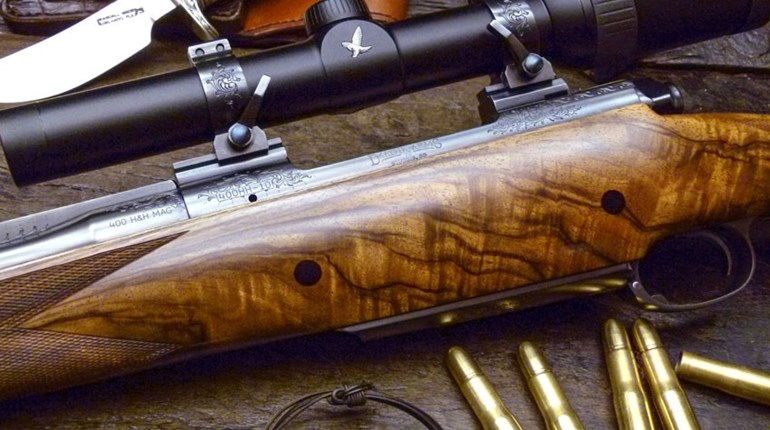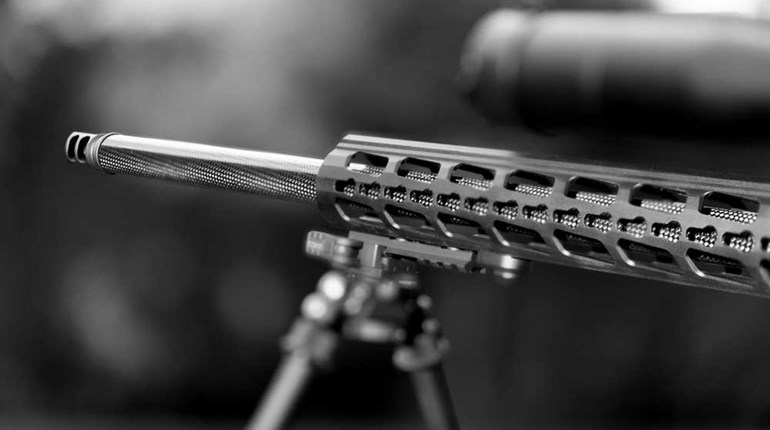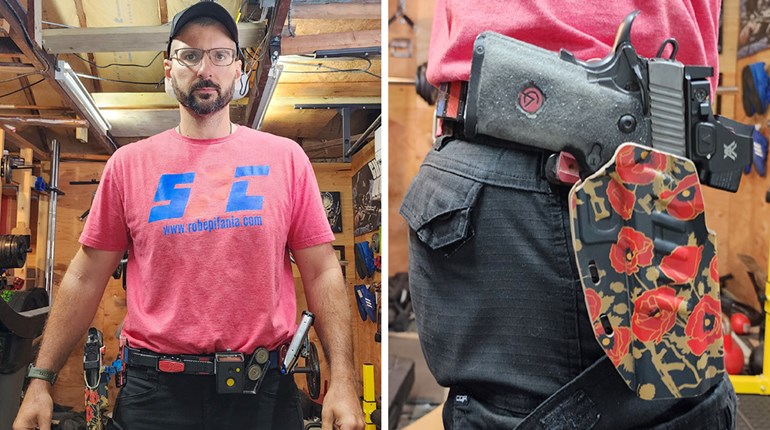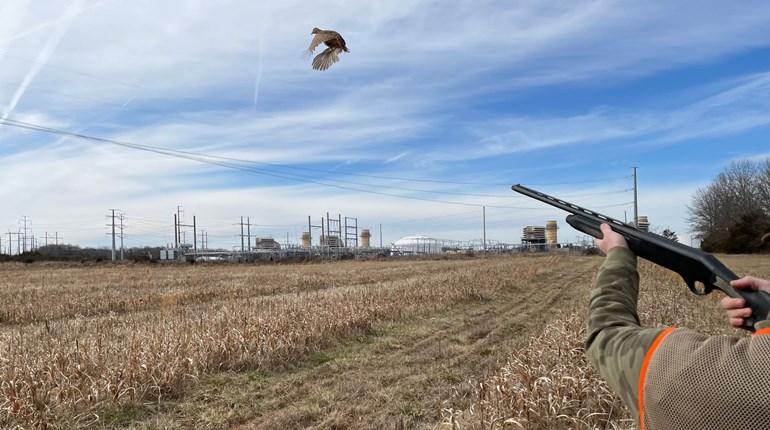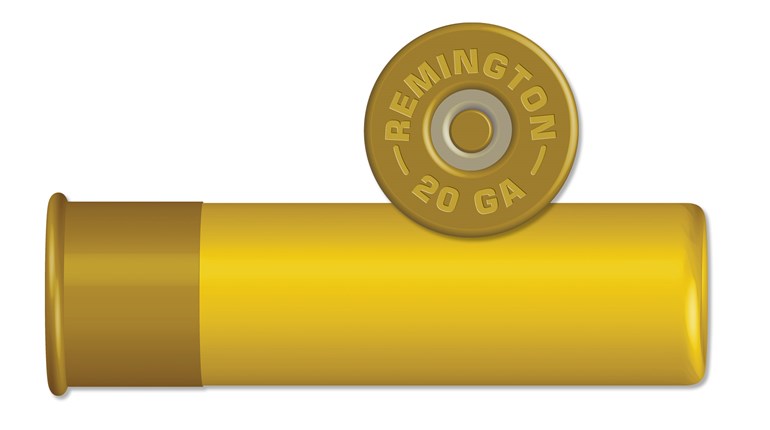
What is the best material for a gun barrel? The answer is "it depends," but before we delve into that, it's important to understand the challenges that barrel makers face. Prior to 1880, alloys of brass or iron were commonly used to make gun barrels. However, these metals proved unsuitable for the new smokeless propellants introduced after 1885. To safely function with smokeless propellants, new metal alloys had to be developed. Today, various alloys of steel are universally preferred for gun barrels because they are:
Steel makers offer special "ordnance-grade" steel alloys for the manufacture of gun barrels. Ordnance-grade alloys are subjected to special handling, careful heat treatment and rigorous analysis to assure quality and consistency. The majority of barrels are monolithic—that is, the entire barrel is made out of a single piece of metal. Here, it should be noted that different rifling methods utilized by barrel makers (more on that in a bit) often work best with specific steel alloys and levels of hardness. Most barrel steels have a hardness of around 25 to 32 on the Rockwell C scale. Suitable metal alloys for monolithic gun barrels include:
Alloy Steels
Suitable barrel alloys include types having varying amounts of chromium, molybdenum, vanadium, nickel and manganese as alloying metals. A popular example and perennial favorite in the U.S. is called SAE 4140 chrome-molybdenum or "chrome-moly" steel. In Europe, vanadium and nickel-steel alloys are preferred. Most standard barrels are made with alloy steels, as they offer an excellent balance of strength and cost.
Stainless Steels
Stainless-steel barrels have been around since the 1930s. However, they have recently seen widespread use for two reasons: First, their resistance to heat erosion is superior to chrome-moly barrels; second, their resistance to rust nearly eliminates corrosion in humid environments. Stainless-steel barrels have become a popular choice for competition rifles, varmint rifles, all-weather rifles, combat handguns and marine shotguns. An especially popular stainless steel alloy used by many barrel makers is called 416R. Like all stainless steels, it contains a high percentage of chromium (about 10 percent) and small amounts of sulfur to make it easier to machine. Barrels made of stainless steel are more expensive than those made of alloy steel, as the cost of the raw materials is higher.
Columbium
Columbium is an elemental metal with similar physical and strength characteristics to stainless steel, but with superior resistance to heat erosion and corrosion. However, columbium is scarce and very expensive, making it a rare choice for a gun barrel.
New materials and manufacturing techniques have made possible several types of non-traditional, specialized barrels having composite or multi-component construction. Normally, such barrels have an alloy steel or stainless steel bore liner. Some of these materials include:
Aluminum
Aluminum is very light, but it lacks the strength and resistance to heat erosion found in steels. For this reason, aluminum barrels must have a steel liner. Aluminum-alloy sleeves around a steel barrel are common in revolvers, such as the Dan Wesson series.
Titanium
Titanium-cobalt alloys offer the strength of steel at approximately half the weight. However, titanium is very expensive and difficult to machine. In addition, titanium barrels and cylinders require a steel liner. Popular applications include barrels, cylinders on some models of S&W and Taurus revolvers, as well as some models of bolt-action rifles, notably recent models from Remington.
Carbon Fiber
Although expensive, a carbon-fiber outer shell imparts high rigidity, natural vibration damping and excellent resistance at a fraction of the weight of metal barrels. For these reasons, carbon-fiber barrels are a popular choice for ultra-lightweight rifles (with, of course, a stainless-steel liner).
Fiberglass
Glass fiber is very strong and resistant to heat. Like carbon fiber, it must be built up on a steel liner tube where its strength and light weight can be combined to best advantage. It's also inexpensive and widely available, but it's recently been all but replaced by carbon fiber despite carbon fiber's high cost.
Other
Considerable opportunity remains in the technical development of gun barrels. New materials that promise to be very effective include metal-matrix composites, ceramics and metal alloys engineered at the atomic particle level.
- Widely available
- Relatively inexpensive
- Easily machined
- Superior in strength
- Superior in toughness
- High hardness
- Excellent heat and wear resistance
- Resistant to shock
Steel makers offer special "ordnance-grade" steel alloys for the manufacture of gun barrels. Ordnance-grade alloys are subjected to special handling, careful heat treatment and rigorous analysis to assure quality and consistency. The majority of barrels are monolithic—that is, the entire barrel is made out of a single piece of metal. Here, it should be noted that different rifling methods utilized by barrel makers (more on that in a bit) often work best with specific steel alloys and levels of hardness. Most barrel steels have a hardness of around 25 to 32 on the Rockwell C scale. Suitable metal alloys for monolithic gun barrels include:
Alloy Steels
Suitable barrel alloys include types having varying amounts of chromium, molybdenum, vanadium, nickel and manganese as alloying metals. A popular example and perennial favorite in the U.S. is called SAE 4140 chrome-molybdenum or "chrome-moly" steel. In Europe, vanadium and nickel-steel alloys are preferred. Most standard barrels are made with alloy steels, as they offer an excellent balance of strength and cost.
Stainless Steels
Stainless-steel barrels have been around since the 1930s. However, they have recently seen widespread use for two reasons: First, their resistance to heat erosion is superior to chrome-moly barrels; second, their resistance to rust nearly eliminates corrosion in humid environments. Stainless-steel barrels have become a popular choice for competition rifles, varmint rifles, all-weather rifles, combat handguns and marine shotguns. An especially popular stainless steel alloy used by many barrel makers is called 416R. Like all stainless steels, it contains a high percentage of chromium (about 10 percent) and small amounts of sulfur to make it easier to machine. Barrels made of stainless steel are more expensive than those made of alloy steel, as the cost of the raw materials is higher.
Columbium
Columbium is an elemental metal with similar physical and strength characteristics to stainless steel, but with superior resistance to heat erosion and corrosion. However, columbium is scarce and very expensive, making it a rare choice for a gun barrel.
New materials and manufacturing techniques have made possible several types of non-traditional, specialized barrels having composite or multi-component construction. Normally, such barrels have an alloy steel or stainless steel bore liner. Some of these materials include:
Aluminum
Aluminum is very light, but it lacks the strength and resistance to heat erosion found in steels. For this reason, aluminum barrels must have a steel liner. Aluminum-alloy sleeves around a steel barrel are common in revolvers, such as the Dan Wesson series.
Titanium
Titanium-cobalt alloys offer the strength of steel at approximately half the weight. However, titanium is very expensive and difficult to machine. In addition, titanium barrels and cylinders require a steel liner. Popular applications include barrels, cylinders on some models of S&W and Taurus revolvers, as well as some models of bolt-action rifles, notably recent models from Remington.
Carbon Fiber
Although expensive, a carbon-fiber outer shell imparts high rigidity, natural vibration damping and excellent resistance at a fraction of the weight of metal barrels. For these reasons, carbon-fiber barrels are a popular choice for ultra-lightweight rifles (with, of course, a stainless-steel liner).
Fiberglass
Glass fiber is very strong and resistant to heat. Like carbon fiber, it must be built up on a steel liner tube where its strength and light weight can be combined to best advantage. It's also inexpensive and widely available, but it's recently been all but replaced by carbon fiber despite carbon fiber's high cost.
Other
Considerable opportunity remains in the technical development of gun barrels. New materials that promise to be very effective include metal-matrix composites, ceramics and metal alloys engineered at the atomic particle level.













